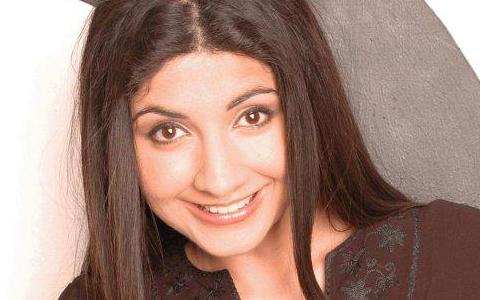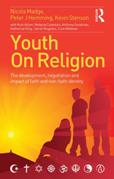Multiculturalism has failed to help integration, first British youth religion survey finds
by - 16th January 2014
 A LEADING secular Muslim has called for the government to do more to tackle the continued segregation between religious groups in some of the most diverse areas of the country.
A LEADING secular Muslim has called for the government to do more to tackle the continued segregation between religious groups in some of the most diverse areas of the country.
Tehmina Kazi, director of British Muslims for Secular Society, was responding to new research out today which reveals inter-faith relations between young people living in diverse areas remain difficult despite increased tolerance and optimism about religious pluralism.
 The Youth on Religion report, published by Brunel University today, is the first large-scale research of its kind and was carried out among 10,000 12 to 18-year-olds living in Bradford and the London boroughs of Hillingdon and Newham and found multiculturalism has not led to better cohesion between people of different faiths.
The Youth on Religion report, published by Brunel University today, is the first large-scale research of its kind and was carried out among 10,000 12 to 18-year-olds living in Bradford and the London boroughs of Hillingdon and Newham and found multiculturalism has not led to better cohesion between people of different faiths.
According to the study, the young people – who came from Muslim, Christian, Sikh, Jewish and no-faith backgrounds - were more likely to stick to their own religious groups than mix with others although they were in principle more tolerant of other faiths.
The study, funded by the AHRC/ESRC Religion & Society Programme, highlighted ‘overt tensions’ between faith groups living in Bradford, and the London boroughs of Hillingdon and Newham.
Despite these areas being religiously and ethnically diverse, perceptions among the young people growing up in them revealed a segregated picture rather than an integrated one; with young people sticking to their own religions when it came to friendship groups and relationships.
 Brunel University’s Professor Nicola Madge, who led the study, told Lapido: ‘Those we interviewed valued friendships across religious divides for the opportunities they gave to learn more about different religious lifestyles and traditions, but generally stressed how it could be easier to be friends with those who shared understandings and cultures.
Brunel University’s Professor Nicola Madge, who led the study, told Lapido: ‘Those we interviewed valued friendships across religious divides for the opportunities they gave to learn more about different religious lifestyles and traditions, but generally stressed how it could be easier to be friends with those who shared understandings and cultures.
‘This is supported by the finding that more than 70% of Muslims, half the Christians and Sikhs, and a third with no specific faith in our survey reported that all or most of their friends were from similar faith backgrounds to themselves. They also suggested that young people from similar faith backgrounds are most likely to get on well, and that cultural and ethnic groups commonly cluster together at school or college.’
Cohesion
Kazi told Lapido the best way to tackle the mistrust between people from different backgrounds living in multi-ethnic areas was to ‘invest more funding in inter-faith and intra-faith social action projects, where communities are brought together to tackle specific issues as a collective’.
‘These could include food poverty, capital appeals for community buildings, or giving blood,’ she added, and also praised initiatives such as Near Neighbours and Together in Service.
According to the study, young people called for ‘better education at school, in the community and through the media, improved equality and respect, and more integration’ to help people from different religions get on well together.
‘Participants in the study demonstrated widespread liberalism as well as optimism and respect for diversity. They were not, however, complacent about the challenges for inter-faith relations in multicultural locations, and called for public policies that would help to promote greater mutual mixing and understanding.
‘Maintaining their optimism about social cohesion is likely to be dependent on future patterns of societal equity as well as the development of new forms of national identity.’
The survey revealed tension and resentment often arose among young people because of a perceived special treatment for certain religious groups – for examples, who were found to be the most sure of their faith, the highest levels of ‘belonging’ and who were most likely to follow their religion’s dress codes and doctrines.
For many young Muslim girls, ‘wearing religious dress enabled them to present themselves as ambassadors “speaking up” for the religion”.
But some participants of no faith were ‘critical’ of Muslim women who sometimes wore the hijab but sometimes did not.
The researchers said: ‘They felt that religious clothing should be worn either always or never, and seemed to feel that it was not fair otherwise. They suggested that some people took the hijab off if they felt their hair looked particularly good, or if a specific outfit seemed better without it.
‘This clearly caused tensions for young people who felt Muslims were being treated more favourably but were taking advantage of their privileges.’
The study also highlighted the rise of ‘modern Muslims’ – those who were followers of the faith but did not necessarily pray five times a day or abstain from alcohol, highlighting the effect of Westernisation and increased secularisation.
Kazi told Lapido: ‘On a personal level, one can be a secular Muslim and still pray five times a day, sport a headscarf or beard and fast during Ramadan, or any combination of the above.
‘What sets secular Muslims apart is their unyielding commitment to equality and universal human rights, even when these may conflict with certain traditions that purport to be religiously inspired. In practice, this could mean: encouraging women to take up leadership roles in Muslim civil society organisations, creating a safe space for LGBT people in mosques, and abolishing discrimination against members of minority sects such as campaigning against the boycott of Ahmadi butchers, which took place a few years ago.’
The research also revealed that despite growing up having exposure to a range of different faiths, family remains the driving factor behind most young people’s faith decisions, beliefs, habits and practices.
Youth On Religion: The development, negotiation and impact of faith and non-faith identity by Nicola Madge, Peter J Hemming and Kevin Stenson is published by Routledge, and is available from their website, price £29.99.
- Log in to post comments
